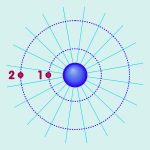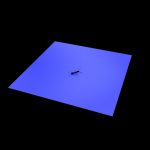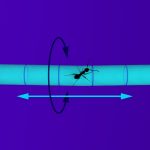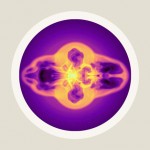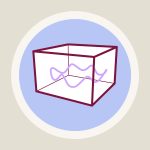Simplicity in higher dimensions
Why matters that seem rather complicated might be much more simple in higher dimensions
An article by Virginia Dippel
According to theories such as string theory, our world has more than the usual three spatial dimensions. On the one hand, that prediction leads to problems – physicists have to explain how it comes that, in everyday life, we experience only three of the ten space dimensions postulated by string theory (for answers to this question, see the spotlight topics Extra dimensions – and how to hide them as well as The embedded universe). On the other hand, extra dimensions do have advantages. Simply put, matters that are rather complicated in lower dimensions can turn out to be quite simple in the presence of extra dimensions!
Objects in a plane
For an illustration, look at flat, two-dimensional space – look at a plane, and particularly at the following two objects:
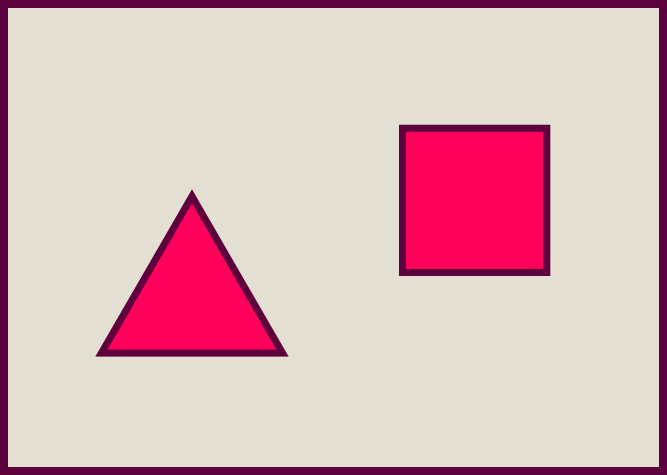
I claim that triangle and square are really (i.e. in three-dimensional space) the same thing – they just look differently to two-dimensional beings living in the plane. Why is that? Let’s look at a three-dimensional pyramid – its facets are a square and four triangles. Two-dimensional inhabitants of the plane can never see the whole pyramid – they can only see parts of it, depending on where the pyramid is situated relative to the plane they live in.
A unified description
In the case that the basis of the pyramid lies parallel to the plane in question, the two-dimensional beings see a square:
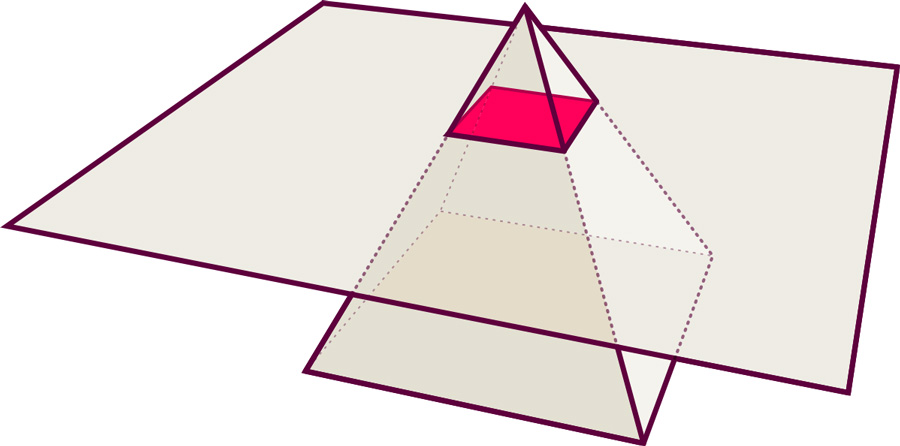
If, on the other hand, the pyramid is lying on its side, the plane-dwellers will see a triangle:
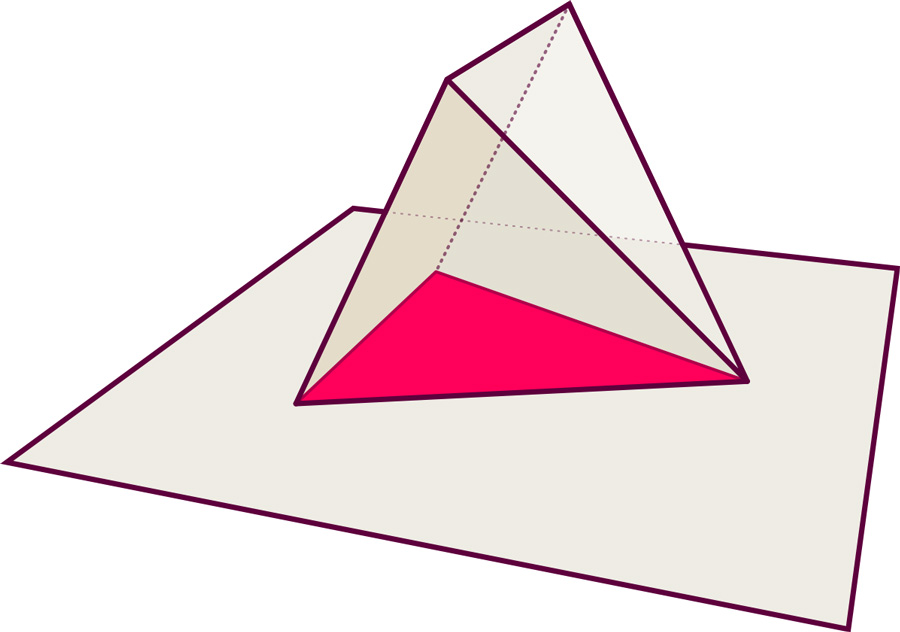
If two-dimensional beings think that triangle and square are two totally different objects, one shouldn’t hold it against them. It is only obvious from the perspective of higher dimensions that they are (literally) facets of one and the same object – a pyramid.
Our pyramid is an example for a far more general truth: Entities that, in lower dimensions, seem different can turn out to be parts of a single entity in higher dimensions. In our pyramid situation, a “theory” that is confined to lower dimensions and describes squares and triangles, is unnecessarily complicated.
A similar situation arises for physical theories that involve more than three space dimensions. Different species of elementary particles we observe in three-dimensional space can turn out to be merely different manifestations of one and the same species of higher-dimensional particle! For theoretical physicists, with their quest to describe the universe as simply as possible, this is a very attractive feature of extra dimensions. For instance, there are hopes that, in the framework of string theory, it might be possible to understand the current plethora of elementary particles as different manifestations of a single species of oscillating string – with extra spatial dimensions in which the string can oscillate crucial to explain all the different possibilities of particles in three-dimensional space.
Further Information
The relativistic background of this spotlight topic is explained in Elementary Einstein, especially on the page Superstrings and universal harmony in the chapter Relativity and the quantum.
For more information about extra dimensions, check out the spotlight topics Extra dimensions – and how to hide them, Hunting for extra dimensions and The embedded universe. Related spotlight topics can be found in the section Relativity and the quantum.
Copyright
- Images of pyramid: T. Klose, AEI
Colophon
used to work as a scientist at the Albert Einstein Institute in Potsdam.
Citation
Cite this article as:
Virginia Dippel, “Simplicity in higher dimensions” in: Einstein Online Band 04 (2010), 01-1028



